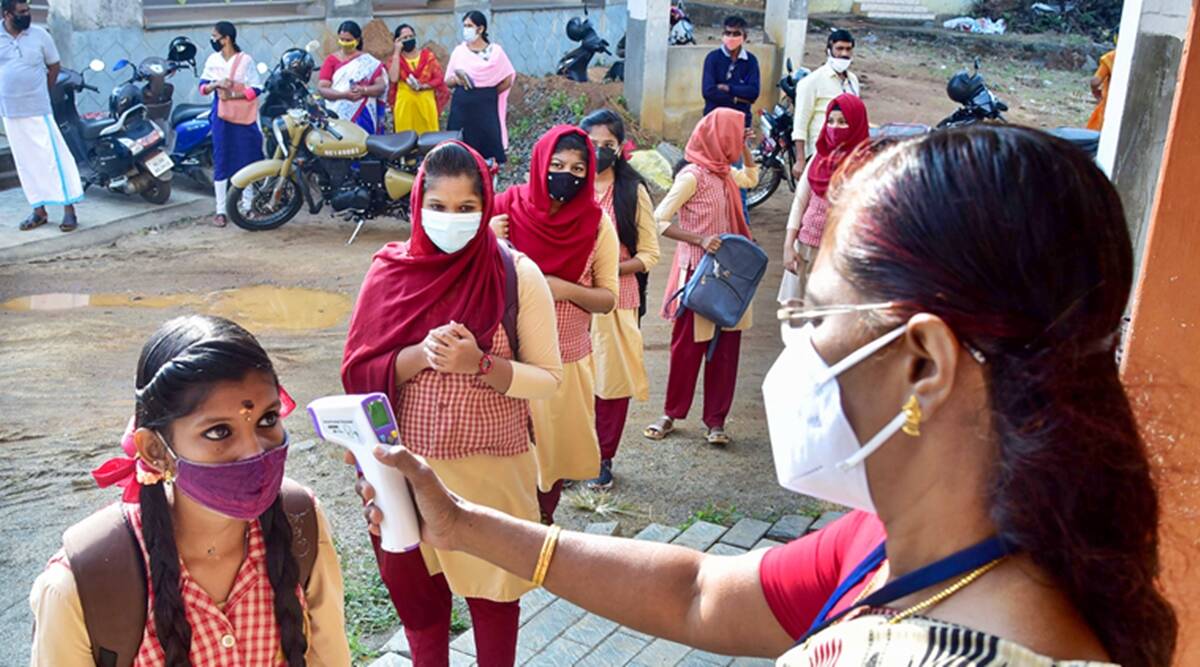
Kerala shows early signs of flattening COVID curve
In what could be a big source of relief for the new Pinarayi Vijayan cabinet being sworn in on Friday, Kerala is showing early signs of flattening the COVID curve; the case load and positivity rate have declined, but testing numebrs need to be kept up, say experts

In what could be a big source of relief for the new Pinarayi Vijayan cabinet being sworn in on Friday, Kerala is showing early signs of flattening the COVID curve. However, the lockdown statewide, and the triple lockdown in four districts, continue to be in place.
The average number of daily new cases, which was 37,144 in the May 1-8 period, fell to 35,919 post lockdown implementation, in the second week of the month. A fall of 10-30% was recorded across eight districts in the week that followed.
Vijayan told media persons the test positivity rate is also coming down in the districts where a triple lockdown has been imposed — Thrissur, Malappuram, Thiruvananthapuram and Ernakulam. “But it is too early to think about any relaxation in lockdown rules,” he cautioned.
Positivity rate declines
In the last three days, the average test positivity rate was 24.5; this was down to 23.29 on Thursday. There is a declining trend since the first week of May, noted the Chief Minister. From April 14 to 20, the growth rate was 134.7% against the previous week. On the contrary, in the week from April 28 to May 4, it was just 28.71%.
There is a drop of 3.15% in test positivity rate this week compared to the previous week. In the number of new cases reported, too, there is a drop, of 12.1%.
The total number of active cases has fallen substantially, from 4.45 lakh to 3.31 lakh, as on May 19. The number of people admitted in hospitals has also come down, giving healthcare workers a breather. Just 37,974 people are in hospitals now due to COVID; a substantial portion of those who tested positive are in home isolation only.
“The data show the relevance of lockdowns,” said Padmanabha Shenoy, a rheumatology and clinical immunology specialist. “Most districts in Kerala are degrowing week on week. Malappuram, Palakkad and Kollam are three districts which are showing a growing trend with increasing TPR (test positivity rate). They will also hopefully degrow in the coming weeks.”
Relevance of lockdowns
However, he is sceptical about the need for very severe restrictions such as triple lockdowns. As the name suggests, a triple lockdown entails three levels of curbs — in assigned districts, in specific containment zones in those districts, and in houses where patients reside.
Also read: Kerala triple lockdown: Harsh curbs, irrational rules leave people in the lurch
“In Ernakulam, on May 1, a mini lockdown was in place. The effect of any intervention takes a week to show an effect on the curve. From May 9-16, Ernakulam cases showed a 13% decrease, which is clearly the effect of the mini lockdown. The effect of the triple lockdown will be visible from May 16-23 and we can expect a further dip in new cases.
“I’m not sure whether such severe curbs like triple lockdown — with closing down most roads — is required when the curve is already dipping,” said Shenoy.
Arun NM, an internal medicine expert who has been tracking COVID data, expressed concern over the decline in testing numbers. “Hope this dip (in COVID cases) in Kerala is sustained, but testing numbers are declining, too,” he observed. On May 18, Kerala tested 1.34 lakh samples, against up to 1.5 lakh in the first week of May.
Hospital capacity
The State has enhanced the number of oxygen and ICU beds considerably. The ICU occupancy in the government sector is 69.5% and the ventilator occupancy is 37%. Vijayan said 239 metric tonnes of oxygen a day is available in the State, against the usage of 135 metric tonnes a day.
There are 19,098 beds available in the FLTCs (first line treatment centres), of which 60.5% remain vacant. Only 50% of the beds are occupied in the second line treatment centres, which have a total bed capacity of 8,821. There are 517 domiciliary care centres, of which only 30% are occupied.


